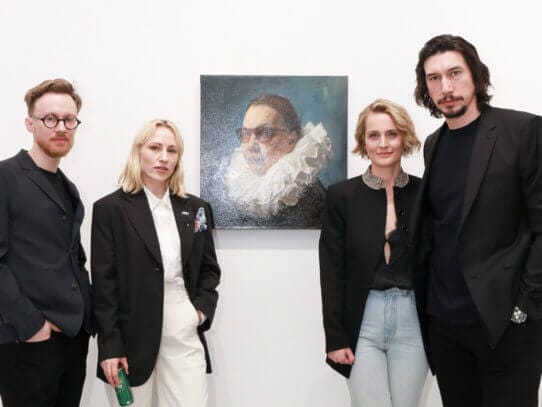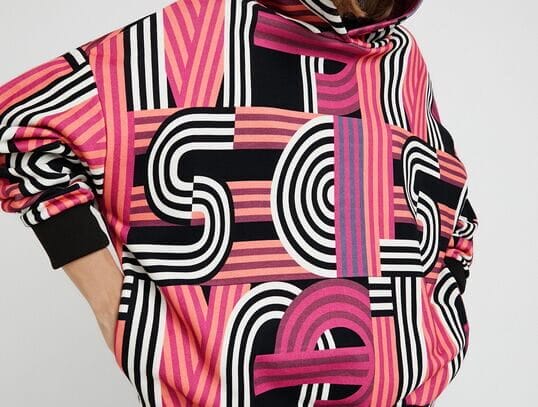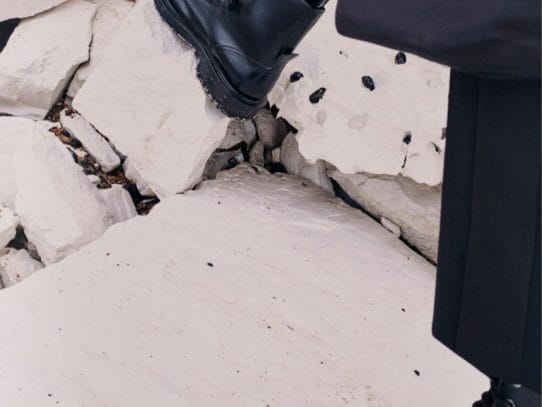Artist Jennifer Elster, infuses her polymorphic creative energy and deep angst into a multiple medium, cinematic, art exhibition
Surreal Realizations:
As a community, multi-media creators are fluent in the techniques and technologies of digital art and colorful storytelling. In today’s global culture, we live in a world of multiple screens and forms of media that shape our thoughts for better or worse. High-resolution monitors, coupled with the rapid speed of technology, are essentially acting as portals to information, creativity, and entertainment as the screens create engaging digital media experiences so that the news that matters to their audiences, whether they fit in a pocket or displayed as billboards.
New and emerging technologies challenge artists to think innovatively about their message within and beyond their audience’s expectations.
Artist Jennifer Elster is known for her creative expertise in infusing her polymorphic creative energy and deep angst into multiple mediums, including cinematic art. Her most recent exhibition takes over a 4,000-square-foot Tribeca space. After entering through towering burgundy curtains, visitors set off on a journey amidst sixteen-foot Corinthian columns through constructions, paintings, and photographs and with apocalyptic predictions infused with the artist’s obstinate dark optimism.
The core characteristics of medium specificity have been a critical argument of multi-medium artists for a long time. Truthfully, it is defined as raw material or mode of expression used in an artistic or creative activity, primarily between the differences in cinema, audio, and painting- its unique properties and aesthetics. The creations are often specific. But the key to conveying the message to an audience lies within the artist’s strength to manipulate those features that are unique to a particular medium and then critically engage with the chosen materials by grounding them into the intrinsic properties that make up the art form.
Jennifer Elster’s Paintings that beckon and warn. Art pieces that one must puzzle together to figure. Portraits provoke surreal realizations and desperate fear. And with comedy, horror, pathos, and style, she weaves in mementos from her earlier life and career, including an installation and artifacts from her avant-garde styling work with David Bowie for his album Outside, photographed by John Scarisbrick. Elster brought this early work to new life with words, paint, and serrated pieces creating a web of sorts.
Jennifer Elster’s paintings beckon and warn. Portraits provoke surreal realizations. And with comedy, horror, pathos, and style, she weaves in mementos from her earlier life and career, including an installation and artifacts from her avant-garde styling work with David Bowie for his album. For the first time, select works of Elster’s will be available on ChannelELSTER.com/limited-editions and Artsy.
Elster’s art provides new ways for artists and non-artists to communicate and engage with the changing world. In a sense, Elster is inventing new realities allowing viewers to challenge their experiences by developing an ability to understand forms of cultural production about broader contexts throughout today’s environment.
We live in a time in which media is a theatrical exhibition. But even as it is being transformed by television, video, and digital media, art seems to survive, and these media, in turn, are giving rise to new forms of moving image art.
Agata Drogowska recently had the pleasure of speaking with artist Jennifer Elster about what inspired her, why she believes art is essential to society, and her work with legendary singer David Bowie!
Agata Drogowska: Where are you from, and how does that affect your work?
Jennifer Elster: I’m from New York. It influences everything. My roots are here. Whether living in a dangerous neighborhood, a nice area, going through 9/11, the Sandy hurricane, or the Covid pandemic, or enjoying Central Park and living fully: it’s all been in the same nearby streets. A history. New York City has its risks. My work is a reaction to what I’ve been through, seen, and felt and a close analysis and expression of what I predict.
AD: Who are your biggest artistic influences?
JF: Life has been my most significant artistic influence. Myself. My loved ones. Bob Dylan was my earliest musical influence because my dad played him all the time, and it was how we related. John and Yoko had a profound effect on me. Bowie was my first concert. And so many other musicians. Music was and is a significant influence in my life. I don’t remember “art” per se as a child. But then I did find a drawing I did of Picasso (on old stationery from The Metropolitan Opera House, where my grandfather was the lead harpist –so it had extra meaning) from when I was very young. And then Picasso’s work made me feel sane at a significant time in my life as an adult. I also had an insanely reflective moment in the Jackson Pollock retrospective at The MoMA. I spoke about that in one of my films that will come out. I’m also a filmmaker. When I was a kid, I would list every movie I saw. Cinema is also such an influence. All mediums come together in this exhibit; watch here for a glimpse.
AD: Where do you find inspiration and what motivates you to create?
JF: I am a source of endless inspiration to myself, and the world is infinite. I am motivated because I need to express myself constantly, though I do not need to share always.
AD: How and where did you first meet David Bowie, and describe your working relationship.
JF: The photographer John Scarisbrick, known for his aggressively energized photography, was commissioned by Bowie. Our agent at that time, Jordan Shippenberg of the Art Department, coordinated my getting involved as I was a stylist, among other things. So Bowie called me, and we spoke quite a bit and intensively. Psychologically, we went to many places together in our discussions about the characters and life. David and I immediately got along and got high from a good conversation. As if we found common ground in one another for this iteration of work. The artistic boundaries between us were limitless. I then went to London for the artwork shoot for 1. Outside, which was the title of this conceptual album. This was back in 1995. I spent a week transforming Bowie into five characters. (He was a real gentleman to work with). I present one of the characters Ramona, in its avant-garde insanity, in my current exhibition, Take Heed, at The Development Gallery, but it is in a new iteration. Something you haven’t seen before. Worth leaving the house. The show will be up until February 16th.
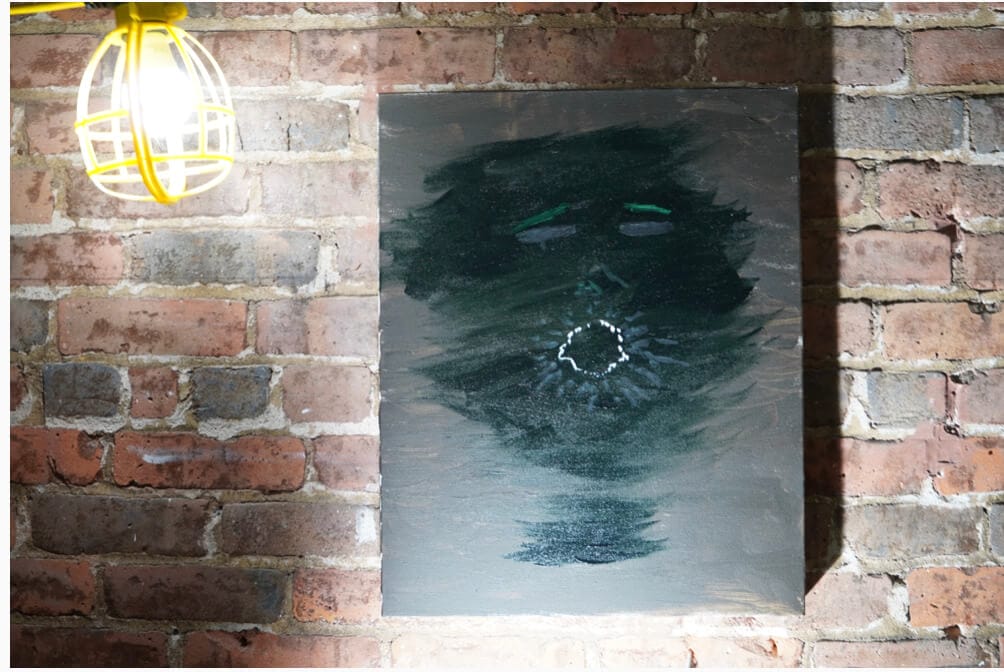
The artist’s anguish is reflected in the vivid brushstrokes in military olive and
black in this painting executed at the beginning of the war in Ukraine, 2022
AD: What are the plans for you and the exhibition?
JF:The gallery is open to the public. We will be hosting events that will include live performance art. Limited editions of the artwork will be available at ChannelELSTER.com/art-gallery and on Artsy (search for The Development Gallery).
AD: In your words, describe how art is essential to society?
JF: Art helps us to cope and encourages us to see. It can be beautiful or terrifying. But it is also essential which artists get attention. What’s going on in the art world is very strange to me. And if it’s bullshit, then channels are wasted.
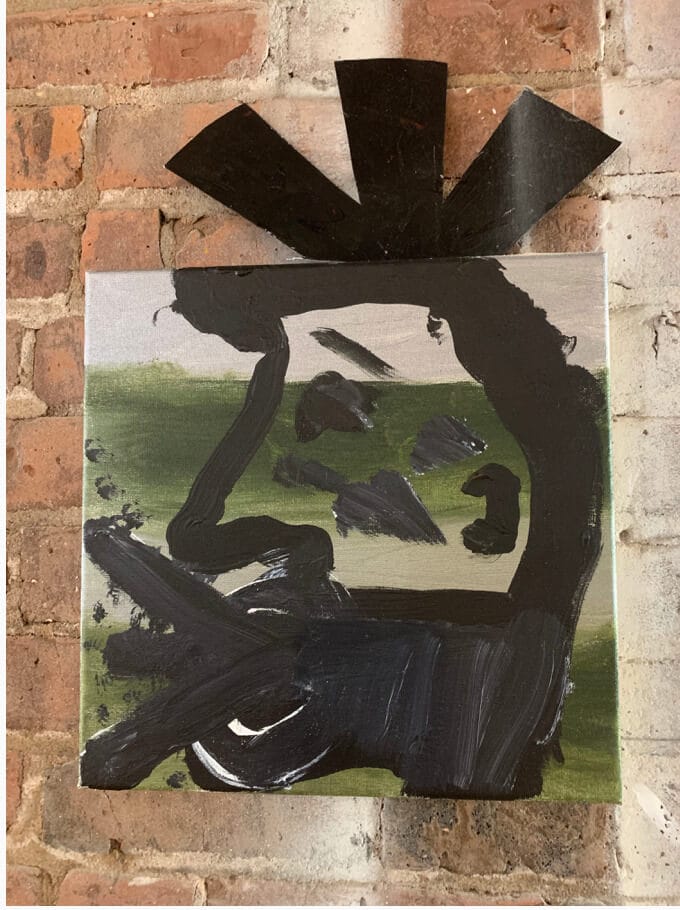
AD: Why did you combine the David Bowie project with engaged art?
JF:That just happened. In 2020 I painted on a canvas of the photograph John Scarisbrick took of Bowie as Ramona, where I had created the pieces he wore. I then cut the painting into its web. I made it when I usually do my annual Spooky House for children (pre Covid), so it satisfied that urge for creativity. I sent my assistant Aline into my hoard to find the cut piece I created for him, and she came out two months later as an archivist. Happily, I found the cut piece in a little box. It hadn’t been touched since Bowie wore it. I also found the bullet belt, the stockings, and the knife. All on display. I throw nothing away. I still make custom pieces, and there is a store in The Development Gallery with specialty pieces for men and women.
AD: Tell me about your favorite medium and why you integrated photographs into your work.
JF:I’m a savage. I love every medium I get involved in. Writing is my favorite. I have taken photographs throughout my life, so natural to include them. Also, pictures can tell a great story. Recently I have been painting which has become more obscure, like what my performance art can sometimes be. In some ways, its obscurity is what makes it ultimately deep. Unattainable.
AD: Does art help you in other areas of your life?
JF: I have made art all my life, and life is art.
@JenniferElster
The Development Gallery 75 Leonard Street, Tribeca Open until February 16th, Tuesday through Sunday from 12-7 pm
Please visit ChannelELSTER.com for further detailsIf you would like to be a client of my work a catalog of the artwork is available to peruse. Stop by the J.ELSTER gift shop in The Development Gallery, where you’ll find cut-pieces, magnets of the artwork, t-shirts, and handmade, raw luxury pouches.For schedule of hours and programming, please visit: www.ChannelELSTER.com/art-gallery@JenniferElster #TheDevelopmentGallery
Save Article



